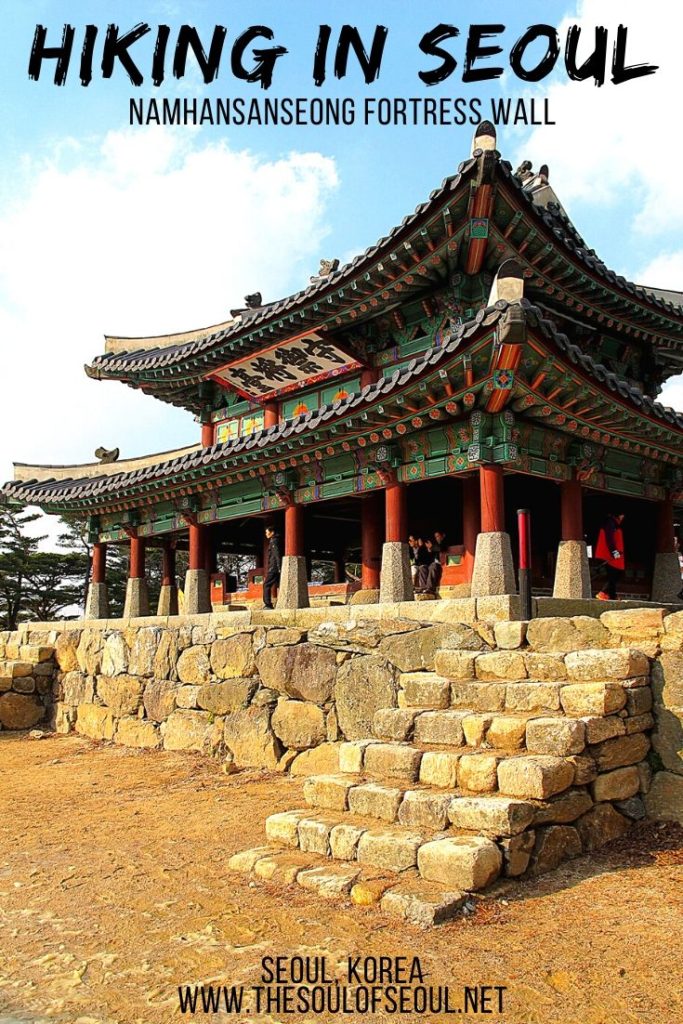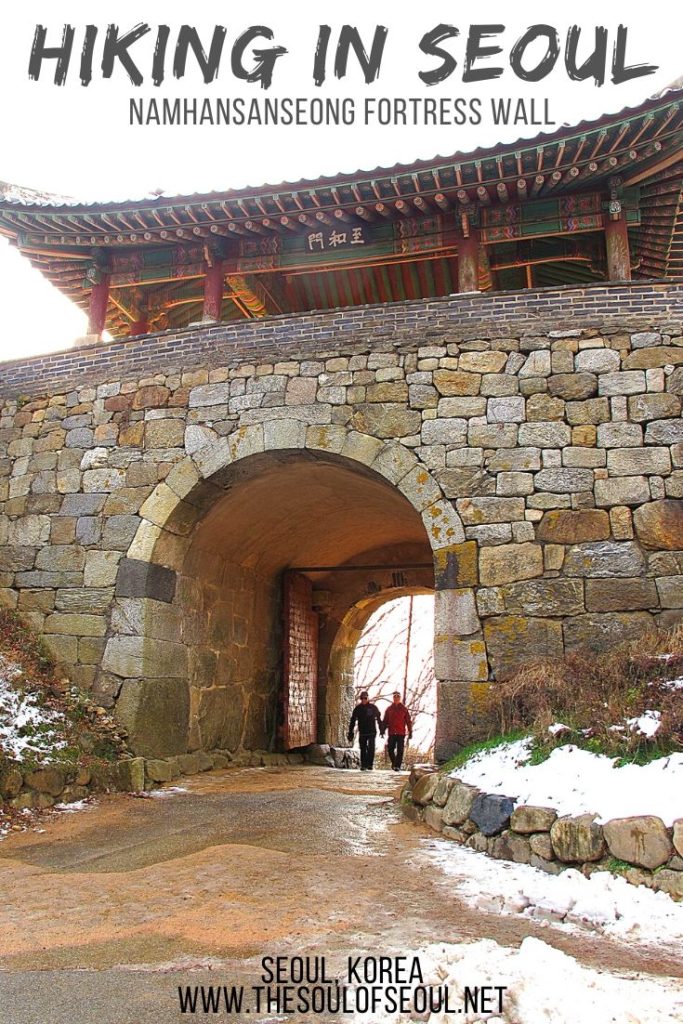Namhansanseong Park and Fortress: Hiking In Seoul
Last Updated on October 19, 2023
Looking for a great place to go hiking in Korea that’s not so difficult, great hiking for families near Seoul, and fun? Have you heard of Namhansanseong Fortress (남한산성도립공원)? While the Seoul Fortress Wall is long and can be rather mountainous in sections, Namhansanseong Fortress Wall is really pretty easy to get around and isn’t nearly as long as Seoul Fortress Wall. It’s a great spot to hike in winter near Seoul and great in the summer too.
The wall is worth a visit in any season and even in winter the paths are relatively easy to walk along as there aren’t too many steep inclines. The restaurants inside the fortress also make it a good day trip with friends or family; take a walk, see some historical sights and then enjoy some supper together before catching the subway home. I’ve been twice with my school’s hiking club and have enjoyed it both times.

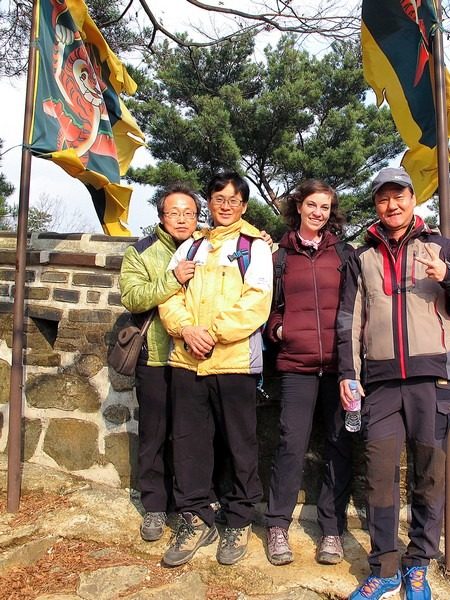
Get ready to hike in Namhansanseong:
- How To Get There
- What you should know about Namhansanseong
- Information For Your Hike
- Mangwolsa Temple
(This post contains affiliate links, which means I receive a certain percentage of a sale if you purchase after clicking. Thank you for your support.)
How To Get There
Address: Sanseong-ri Joongbu-myeon Gwangju-si, Gyeonggi-do (경기도 광주시 중부면 산성리)
By Public Transportation: Make sure you have your topped up and ready to go. The subway and get off at Sanseong Station (Seoul Subway Line 8) and go out exit 2. Take City Bus No. 9, and get off at Namhansanseong bus stop. (Travel Time : 20 Min., Interval of Buses: 20 Min.). OR you could take 13-2 bus at Dongseoul bus terminal Gangbyeon station and transfer to 15-1 bus at the entrance of Namhansanseong, get off at the last stop.
Join a tour:
- Namhansanseong Fortress Walking Tour: Book this Klook tour to join a guide that will take you around the entire fortress wall and stop at the must-see historical spots and tell you about them.
- Namhansanseong UNESCO Historical Sites Private Tour: Book this Viator tour to travel back in time to the days of the Joseon Dynasty on a private 8- to 9-hour tour from Seoul. Begin with a tour at the UNESCO listed Namhansanseong Fortress set amongst the scenic mountains.
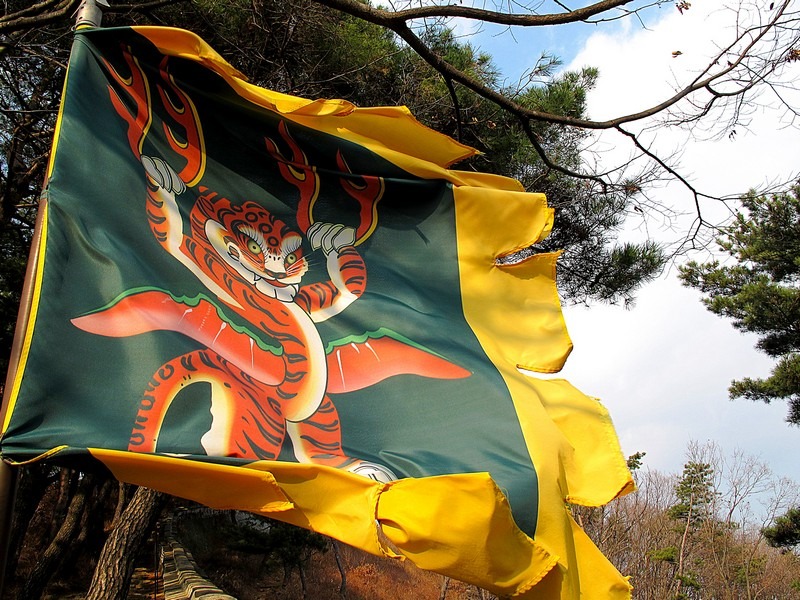
What you should know about Namhansanseong
The wall was originally built during the time of the three kingdoms and was a prime strategic location as it is surrounded by mountains on all sides. It was fought over for thousands of years, destroyed and rebuilt and rebuilt again. The fortress wall currently standing was built during the Joseon Dynasty between 1623 and 1626 during the reign of King Injo. At the time the Manchus were threatening the Ming Dynasty in China and by 1636 the Manchus had made their way to Korea.
King Injo took refuge in the fortress and with 13,600 soldiers and 3,000 fighting monks residing in the temples in the walls held off the invasion of the Manchus for 45 days, it was then that King Injo surrendered due to lack of food and supplies.
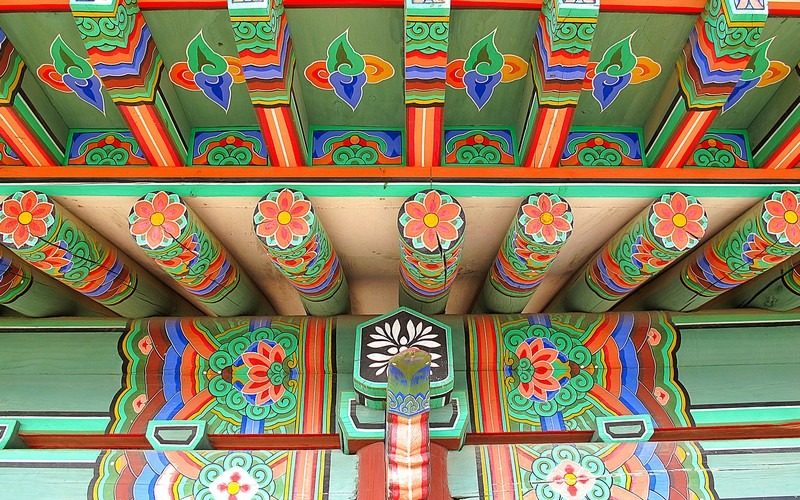

For some time the fortress went unused except for some repair work done during the reign of King Sukjong and King Yeongjo in 1686 and 1778 respectively. While the Seoul Fortress Wall might be in the center of the city and easier to get to, this fortress wall is pretty great to walk around. There are four main gates, North Gate, South Gate, West Gate and East Gate, that allow walkers to go from the inside to the outside of the fortress. Within the walls are a few temples including Mangwolsa, Janggyeongsa, Hyeonjeolsa and Gaewonsa.
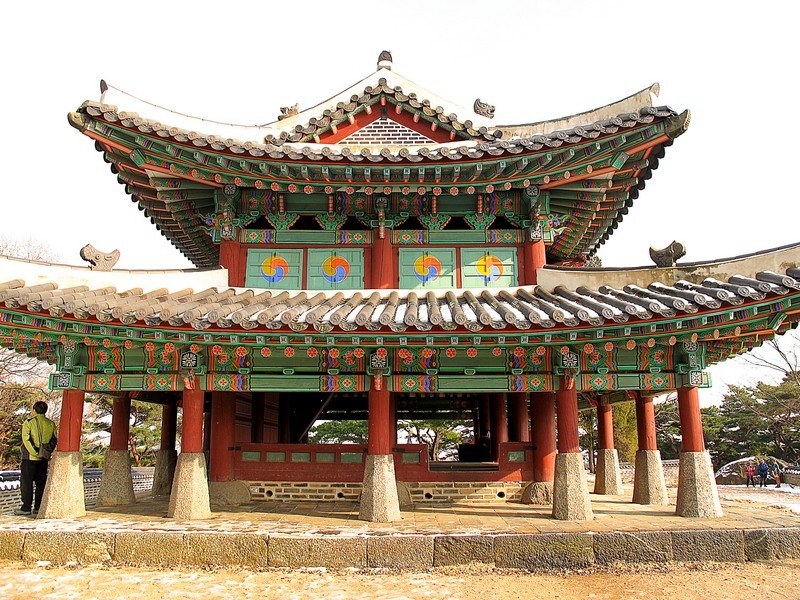
Sueojangdae is the only command post still standing within the walls. It was constructed in 1674 and was originally only one story. In 1751 a second story was added. There is a shrine to the side of the post dedicated to General Lee Hoi, the director of the construction, who was wrongfully accused of embezzling funds and was executed, according to the plaque nearby.
Upon hearing the news of his execution, his wife and his concubine both committed suicide by hurling themselves in the Han River. General Lee Hoi had proclaimed his innocence until his death and predicted that a hawk would appear to prove it so. According to the tale, a hawk did in fact appear and watched as he was executed.

Namhansanseong Fortress was established as a national park in 1954 and offers pleasant walking paths on the inside and outside of the wall. The paths not only follow the wall, but also lead to temples in the vicinity as well as other historical buildings in the area. Entering the fortress area in the winter and heading to the center rotary it seems as if one has just come upon a mountain ski town.

Most people are walking along the quiet side walks through snow bundled up to hit the slopes… but there are no slopes here. There are numerous restaurants and small cafes around the rotary in the center of the fortress and they all cater to the visitor, the hiker, the walker, the family, the solo traveler and anyone else who has happened by in this slow quiet area.
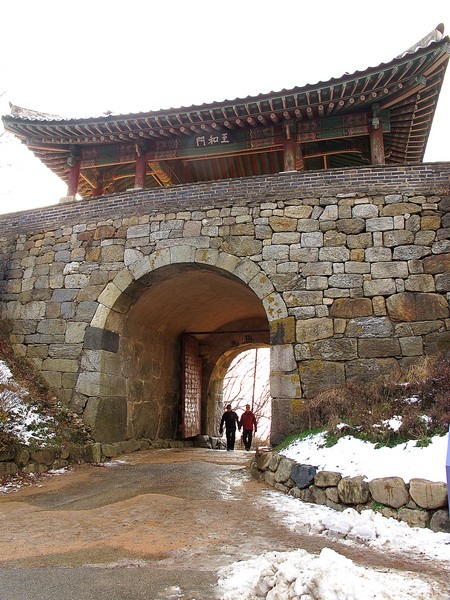

Information For Your Hike
Walking along the wall while listening to the sounds of gunshots coming from the nearby army practice range can make one feel as though the fortress is still providing refuge while the attackers try to scale the mountains. Getting there is not difficult and in the center of the fortress wall is a small town with restaurants and old buildings to walk through and end in to get some grub. There are bathrooms all over the mountain and admission is free making it a very hospitable destination.

In the winter, this was a great hike. I’ve also hiked the Seoul Fortress Wall in the winter, and this is definitely not nearly as steep or strenuous. While many of the old temples were burnt down during the Japanese occupation there is still one old one called Mangwolsa and a few newer ones worth seeing as well as the fortresses four old gates. The wall is in great condition and the walk around the entire place while taking in the sights, I’m told, can take about four hours.
Website: www.namhansansung.or.kr
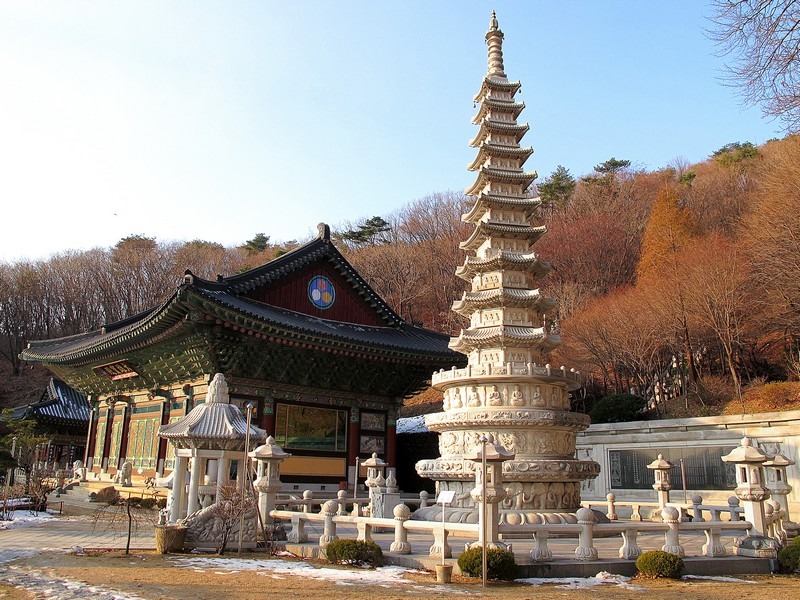
Mangwolsa Temple
Within the walls of Namhansanseong Fortress there are ten Buddhist temples, one of which is Mangwolsa (망월사). There are some amazing temples around Korea and there are some beautiful ones here too. Ten temples within one fortress may seem like a lot, but these aren’t your normal temples. These temples once housed Buddhist soldiers who practiced Buddhism while also helping to guard and protect the fortress walls. Each temple had a role to play in the protection of the fortress which is clear by their position either near an outer wall, a hidden gate or a cannon tower.



Namhansanseong was built in 1624 through the labor of the Buddhist monks and once construction was completed the temples inside were built to house the monks that would then become Buddhist monk soldiers who were tasked with leading the defense of the area until the 1894 Gabo Reform when the Buddhist monk soldier system was abolished.
The temples housed armories and gunpowder stores so that they were ready and able to defend the fortress whenever it was necessary. Most of the temples were burnt down by the Japanese in 1907, but they’ve since been rebuilt and offer a different look into Korean Buddhism and the monks involvement in Korea’s history.
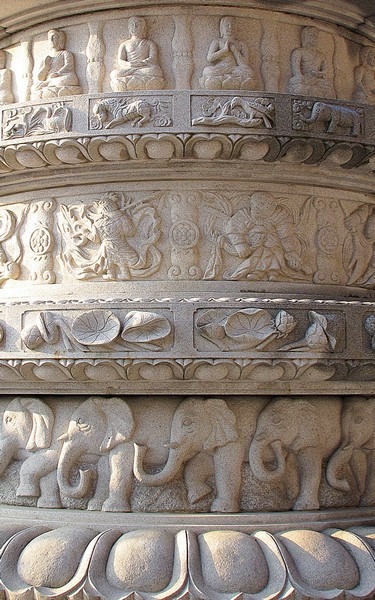

Mangwolsa has the longest history of the ten temples in the fortress and was built before the fortress walls which eventually surrounded it. Originally, it went by the name of Mangwolam hermitage during the Goryeo Period. It is said that the Buddha statue and a copy of the Lotus Sutra written in gold were moved to this temple from Jeongeuisa Temple when King Taejo, the founder of Joseon, decided to move the capital to Hangyang(Seoul) and had Jeongeuisa torn down and the items from it moved to Mangwolsa.
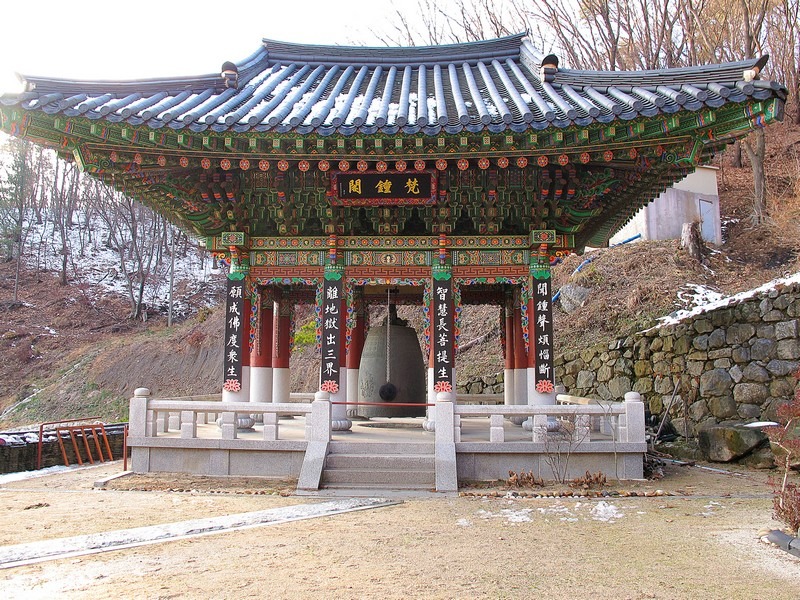
Did you like this post? Pin It!
